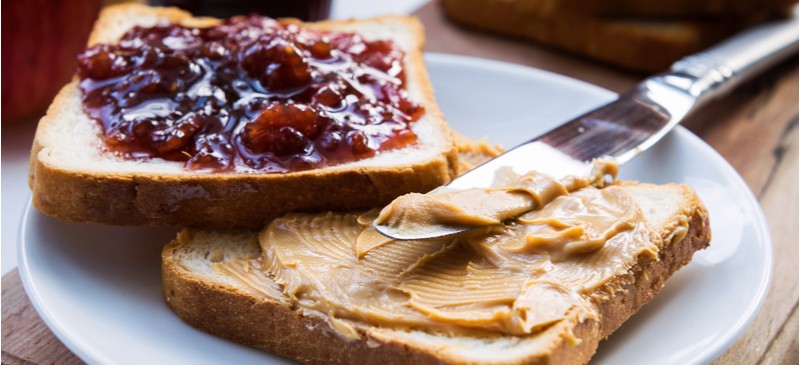The Dangerous Additive Hiding Out in Your PB&J (And Thousands of Other Foods)
February 24, 2021

A dangerous additive is likely lurking in your peanut butter and jelly sandwiches — and thousands of other foods that could wind up on your plate.
I recently interviewed author and activist Vani Hari, AKA The Food Babe, to chat about common ingredients lurking in people’s pantries.
And this one tops her list…
Dangerous Additive Alert: Diglycerides
For years, Hari has been successfully building campaigns to persuade giant food manufacturers and restaurants to eliminate problematic ingredients. During my podcast episode, I asked her what ingredient she’s currently most worried about.
That’s saying something, since there are about 10,000 food additives in the U.S. food supply, including a laundry list of chemicals we should be avoiding.
The dangerous additive in question is a class of emulsifiers called “monoglycerides” and “diglycerides.”
It’s the go-to replacement for deadly trans fats and a food industry staple that helps keep oil and fat from separating. Hari explains that this additive is a byproduct of oil processing, including partially hydrogenated canola and soybean oils.
This additive is a byproduct of oil processing – including partially hydrogenated canola and soybean oils – which contains artificial trans fat – a danger food ingredient known to cause coronary heart disease and linked to 50,000 fatal heart attacks a year.
Center for Science in the Public Interest notes that “gram-for-gram, trans fat is the most harmful fat of all.” In 2016, the Food and Drug Administration finally determined that trans fat is no longer generally recognized as safe for food use.
So as companies phased out trans fat, they turned to what may seem like a more innocuous, harmless preservative replacement in monoglycerides and diglycerides. They’re found in everything from bread and cookies to peanut butter, pancake mixes, other baked goods and more.
And here’s where it gets tricky when it comes to this dangerous additive: Even though mono- and diglycerides may contain trans fat, they aren’t required to be labeled as trans fats on food packages. In fact, Hari warns that some foods containing trace amounts of trans fat due to mono- and diglyceride ingredients could even harbor “No Trans Fat” food labels. That’s because the FDA labeling only regulate triglyceride-related trans fat, not ones like mono- and diglycerides.
It’s just the latest example of how the majority of the food industry is not focused on making us healthier.
“Almost every single ingredient that has been added to our food over the last 50 years has only been invented for one sole purpose,” Hari says. “And that is to improve the bottom line of the food industry. Not to improve our health or make [food] more nutritious.”
Since federal regulations aren’t keeping these dangerous ingredients out of food, it’s best to limit processed foods and, Hari suggests, try asking yourself these questions with every meal…
Detox Questions to Ask with Every Meal
Hari suggesting asking yourself the following questions with every meal for a day, week or month. Doing this, she says, will help you quickly change for the better.
- What are the ingredients? If you know every single ingredient of what you’re eating, it’s well above and beyond what most people are doing today and will set you up with success in terms of knowledge,” she says.
- Are these ingredients nutritious? Where do these ingredients come from? Was that apple grown on an organic farm? Or did farmers spray it with 32 toxic pesticides? Was the bar containing lab-created monoglycerides or diglycerides (so it can sit on a shelf for a year) really a nutritious choice?
“If you have those laid out and can answer them truthfully, or find the answer, then the next time you sit down, you’ll think about it a little more proactively, but you’ll become a savvy armchair nutritionist, too,” Hari says. “You don’t need to be a nutritionist or doctor to know how to eat. It’s common sense when you just investigate your food.”


